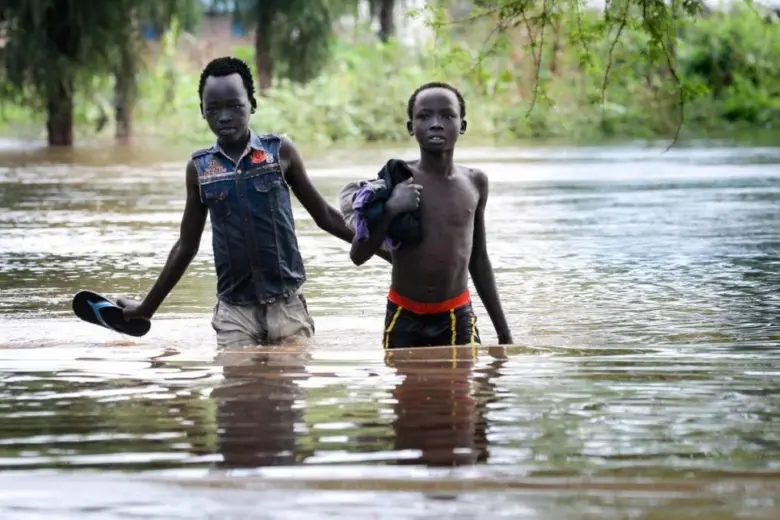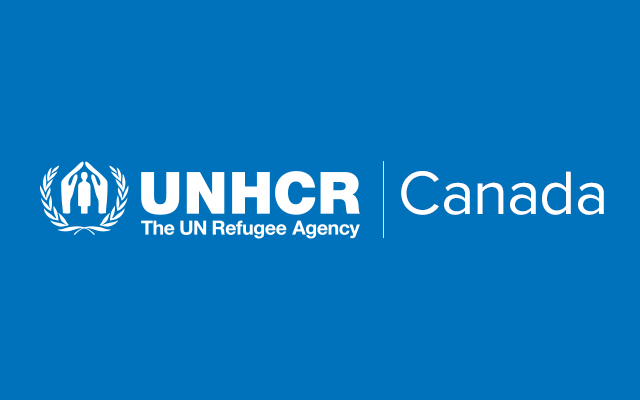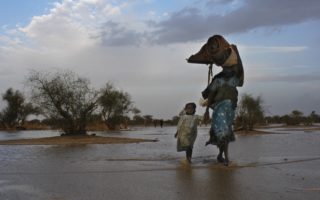
Two boys pick their way along a flooded road in Maban county, South Sudan. © UNHCR/Elizabeth Stuart
This is a summary of what was said by UNHCR spokesperson Andrej Mahecic – to whom quoted text may be attributed – at today’s press briefing at the Palais des Nations in Geneva.
Unprecedented heavy flooding in South Sudan’s Maban County has affected nearly 200,000 people, including refugees and host population.
Situated in the Upper Nile State, the affected area is home to more than 150,000 refugees from Sudan.
South Sudan is on a gradual path to recovery from six years of civil war and now faces flooding that the region has not witnessed in almost four decades.
UNHCR, the UN Refugee Agency, working with its partners and the local authorities is rushing emergency support. People are seeking safety from the flood waters wherever they find dry land, mostly on small islands as unprecedented water levels have submerged vast areas.
The area, near Maban’s capital town of Bunj, is prone to flooding this time of year because of heavy seasonal rains. However, flooding rivers in South Sudan come from the highlands in the neighbouring Ethiopia, where rainfall is becoming more intense and irregular, is also carving its way through neighborhoods in broad, swift rivers.
The most recent precipitation data for west Ethiopia shows above average rainfall over the past 90 days, increasing markedly since late September. The data indicates that over the last 30 days, over 230 per cent of the normal amount of rainfall has fallen there, with an estimated 425 mm falling compared with the average just less than 200 mm. This is more than double the average rainfall in the past four weeks.
The affected population is in dire need of humanitarian assistance. People have fled their homes, carrying their belongings and seen gathering together on little islands of dry ground. Flood waters have submerged major roads, making access to the refugee camps difficult for humanitarians. Schools in the region also remain closed.
The floods have also impacted access to public services, including hospitals and damaged sanitation facilities– increasing health risks. We remain concerned that the flooding may increase the risks and spread of diseases. South Sudan was recently declared cholera free last year with the fears that the deadly disease could make a comeback.
Emergency shelter, food, water and sanitation remain the main needs for refugees and locals. As an immediate response, UNHCR has pre-positioned emergency shelter kits and material assistance to help more than 5,000 affected families/some 25,000 people to rebuild and repair damaged shelter, but more support is needed.
Currently, South Sudan hosts almost 300,000 refugees mainly from Sudan’s Blue Nile and South Kordofan. An additional nearly 1.5 million are internally displaced inside the country.
For more information on this topic, please contact:
- In Juba, Eujin Byun, byun@unhcr.org, +21 1922 405 683
- In Geneva (regional), Dana Hughes, hughes@unhcr.org, +254 733 440 536
- In Geneva, Babar Baloch, baloch@unhcr.org, +41 79 513 9549
- In Geneva, Charlie Yaxley, yaxley@unhcr.org, +41 795 808 702
Please follow this link:B Roll Footage
Originally published on UNHCR on 18 October 2019





